A Legacy of Excellence
The evolution of clinical laboratory science at Augusta University is a testament to innovation, dedication, and a commitment to producing highly skilled healthcare professionals. From its humble beginnings in the 1930s to its current position as a leading program in the field, the program has consistently evolved to meet the changing demands of healthcare.
This historical overview will delve into the key milestones, advancements, and influential figures that have shaped the program's trajectory. We will explore the curriculum changes, facility developments, and collaborations that have contributed to its success.
1938
The first official record made public concerning the program was published in the Journal of the American Medical Association in 1938 (Vol. 110, March 26). The program was housed in the local community hospital, known as University Hospital, with Dr. Edgar R. Pund serving as Program Director. Typical of medical technology programs at that time, the Bachelor of Science degree was required for acceptance into the twelve month program.
Three graduates completed the program in 1938 and were awarded certificates of proficiency. During the following seventeen years, 38 certificates were awarded.

1957
A new curriculum was developed involving three years of student preparation at the University of Georgia, followed by 52 weeks of clinical laboratory training (3 + 1 program). The training occurred at the newly constructed Talmadge Memorial Hospital, the health care component of the Georgia Health Sciences University. Upon successful completion of this curriculum, the student was awarded the Bachelor of Science degree in Medical Technology by the University of Georgia.
The faculty mentor for the program was Dr. Walter L. Shepeard, Professor of Pathology and Director of the Hospital Clinical Laboratories, beginning in 1948 and continuing until 1971 when he retired from the Georgia Health Sciences University. In his honor, achievement awards are conferred annually for outstanding graduates in medical technology and pathology. In 1987, the building housing the medical technology classrooms and laboratories was named in his honor.

1958-1967
38 students received the University of Georgia degree.
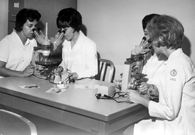
1968
In January 1968, with the approval of the Board of Regents to establish the School of Allied Health Sciences, program activities were grouped in the Department of Medical Technology, with Dr. Shepeard as Chairman.
1971
Dr. Armand B. Glassman, Associate Professor of Pathology and Director of the Clinical Pathology Laboratories, was named Department Chairman. Under his leadership, the Master of Health Education (MHE) degree program was initiated, and the first graduate degrees were awarded in 1976. In July 1976, Dr. Glassman resigned and Ms. Ann S. Anderson was appointed as Chairman. In March 1979, Dr. C. Robert Baisden assumed the position of Medical Director of the program in addition to his role as Director of the Clinical Pathology Laboratories.
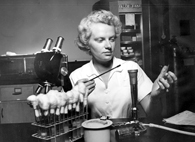
1988-1989
The new 4 + 1 program was started, allowing students with a bachelor's in biology or chemistry to complete the medical technology program in one year. Ms. Anderson retired as chairman in 1989 and was succeeded by Dr. Julia Crowley.
1993
The Master of Science program was started in 1993 and the department accepted its first MS student in the fall of 1993. Also in 1993, the Department of Medical Technology was awarded a $281,560 Allied Health Project Grant from the Department of Health and Human Services for the development of a pilot external degree medical technology program.
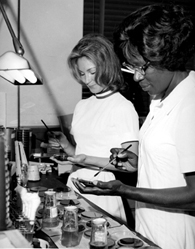
1995
In the spring of 1995, the first distance students received their B.S. degrees from the Medical College of Georgia. Seven students from the northwest area of Georgia were able to graduate from the medical technology program by receiving their instruction from the Medical College via the two-way interactive audio and video system of GSAMS (Georgia Statewide Academic and Medical System).
2000
In the winter of 2000 an Internet based BS program was approved for certified MLT/CLT.
In December, Dr. Julia Crowley retired and Dr. Elizabeth Kenimer Leibach was appointed as Chairman in April of 2001. In 2001, the Department of Medical Technology was awarded $272,000 from the University System of Georgia Office of Economic Development Intellectual Capital Partnership Program (ICAPP). This grant funded the development an implementation of the internet 2+2 program and the expansion of the internet MLT-MT articulation program.
2002
The first students were enrolled in the internet 2+2 program and graduated in 2004. The second class to enroll in the internet 2+2 program included students located in Georgia, Oregon, Washington State and Missouri and graduated in 2005.
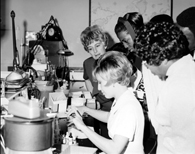
2003
A satellite educational center was instituted at Gwinnett University Center to provide clinical laboratory science laboratories for internet students based in the Atlanta area.
2004
The Board of Regents merged the Department of Medical Technology and the Department of Radiologic Sciences to form the Department of Biomedical and Radiological Technologies, March 1, 2004. Dr. Elizabeth Kenimer-Leibach was appointed as the department chair while also serving as the Program Chair for Medical Technology.
2005
Dr. Barbara Russell became Program Director and in 2006 the program moved into a new interdisciplinary state of the art 189,900-square-foot Health Sciences Building. The building was featured in the August 2007 Healthcare Design magazine.
2008
The University System of Georgia approved the Master of Health Science degree in Clinical Laboratory Science. This degree is offered to students who already have a bachelors degree in a related science and who want to pursue a degree in clinical laboratory science. The baccalaureate degree was also updated to meet the needs of the current workforce demands as well as a revision of the Master of Science degree in Allied Health with a concentration in Clinical Laboratory Science.
2010
As a result of the receipt of an Intellectual Capital Partnership Program (ICAPP) grant through the Office of Economic Development in the University System of Georgia, the department placed a state-of-the-art mobile laboratory on the premises of Gwinnett Medical Center in Lawrenceville, GA. The laboratory was custom built by Farber Specialty Vehicles (Columbus, OH). Each year, up to eight students have been accepted for a hybrid program in which they learn manual skills under the supervision of an on-site faculty and participate in lecture courses online.
2011
The department changed the name from Biomedical and Radiological Technologies to the Department of Medical Laboratory, Imaging and Radiologic Sciences.
2013
Barbara Kraj became Program Director in April.
2016
In November, Scott Wise was named program director after the departure of Barbara Kraj.
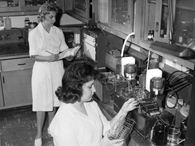
2018
In August, the Medical Laboratory, Imaging and Radiologic Sciences Department was disbanded and the programs, Clinical Laboratory Science, Radiation Therapy and Nuclear Medicine Technology, were assigned to the newly created Department of Undergraduate Health Professions.
2023
In January 2023, upon the retirement of Ana Thompson, Dr. Gregory Passmore was announced as Chair of the Department of Undergraduate Health Professions.
2024
In March 2024, the Department of Undergraduate Health Professions was renamed as the Department of Allied Health Professions.